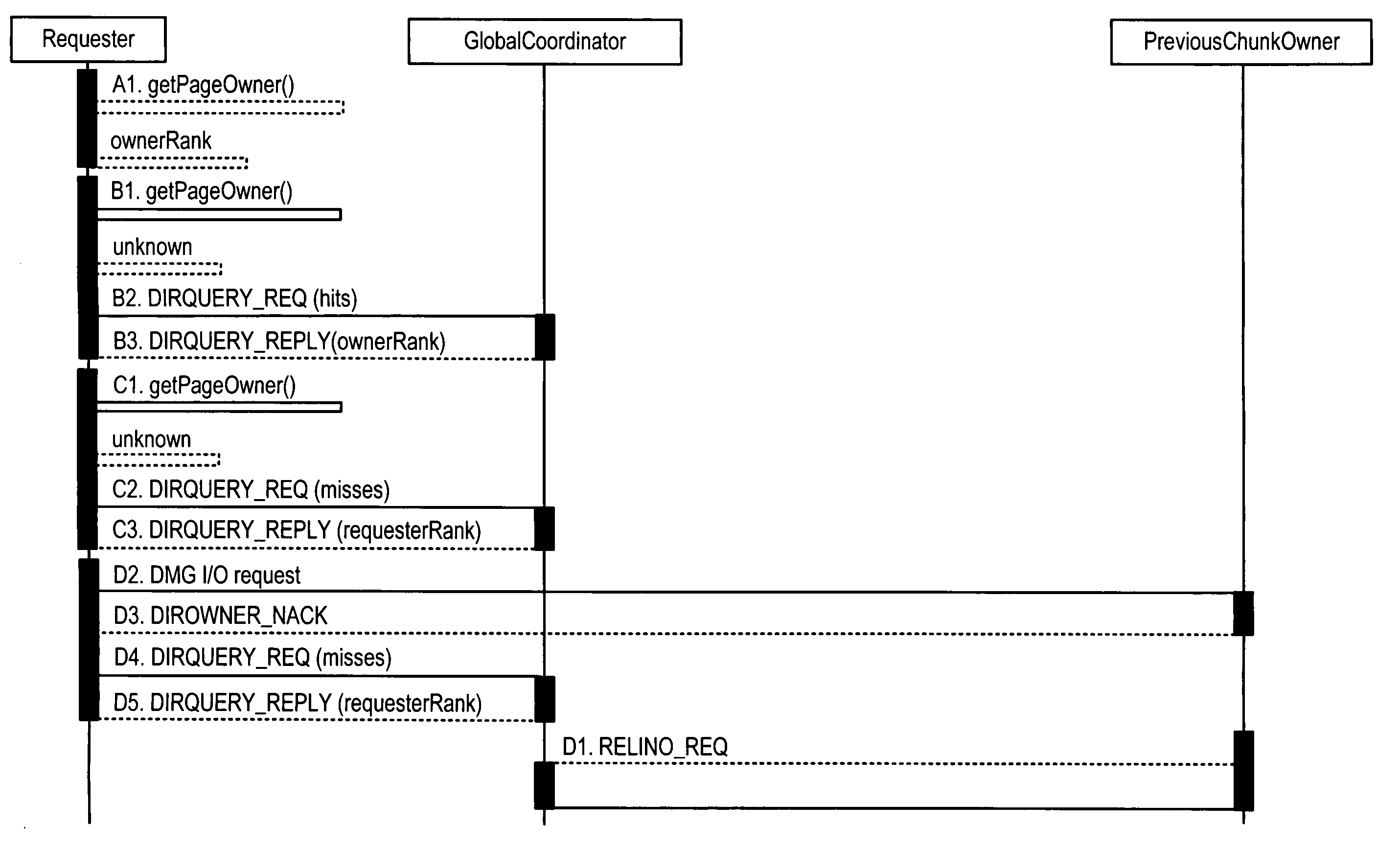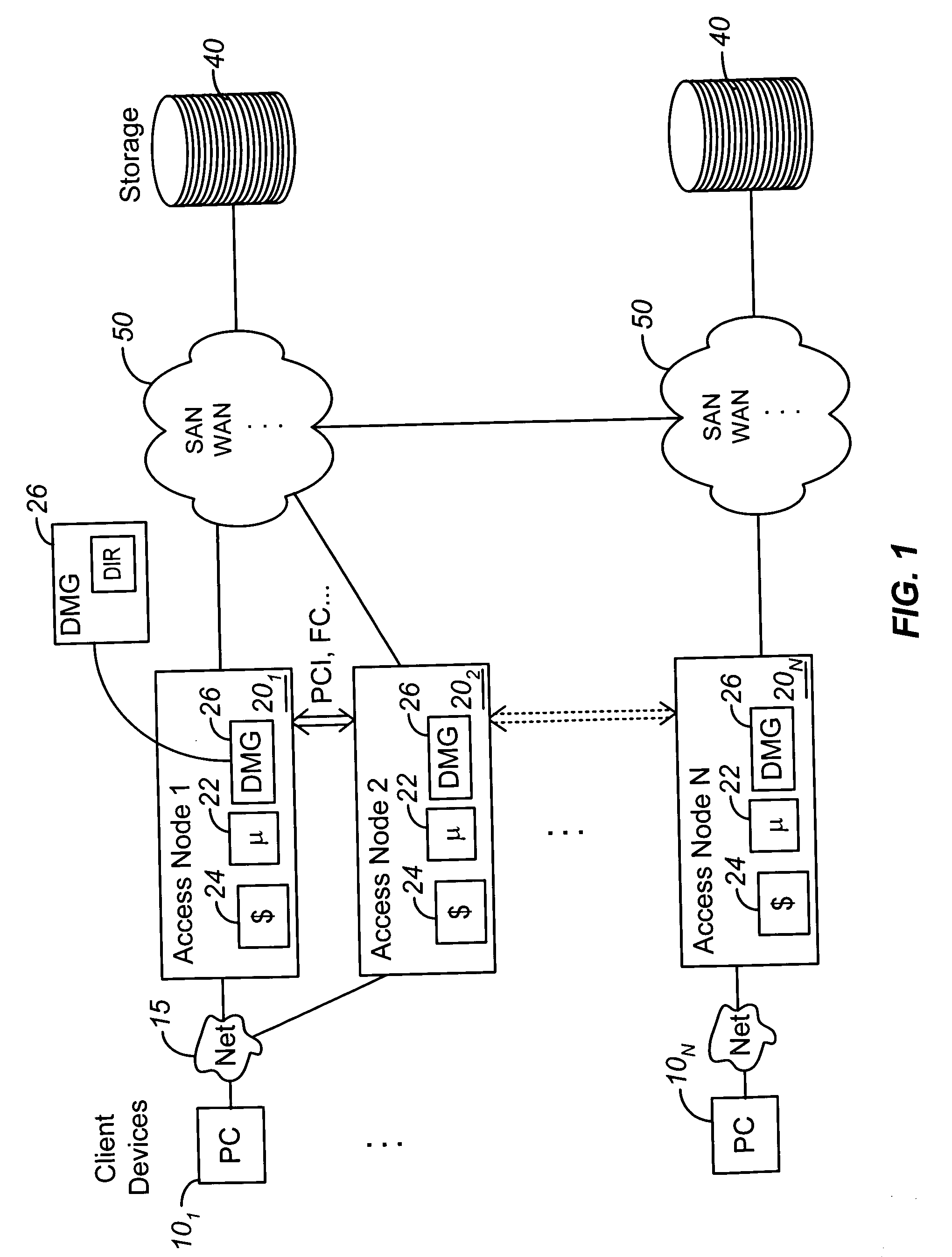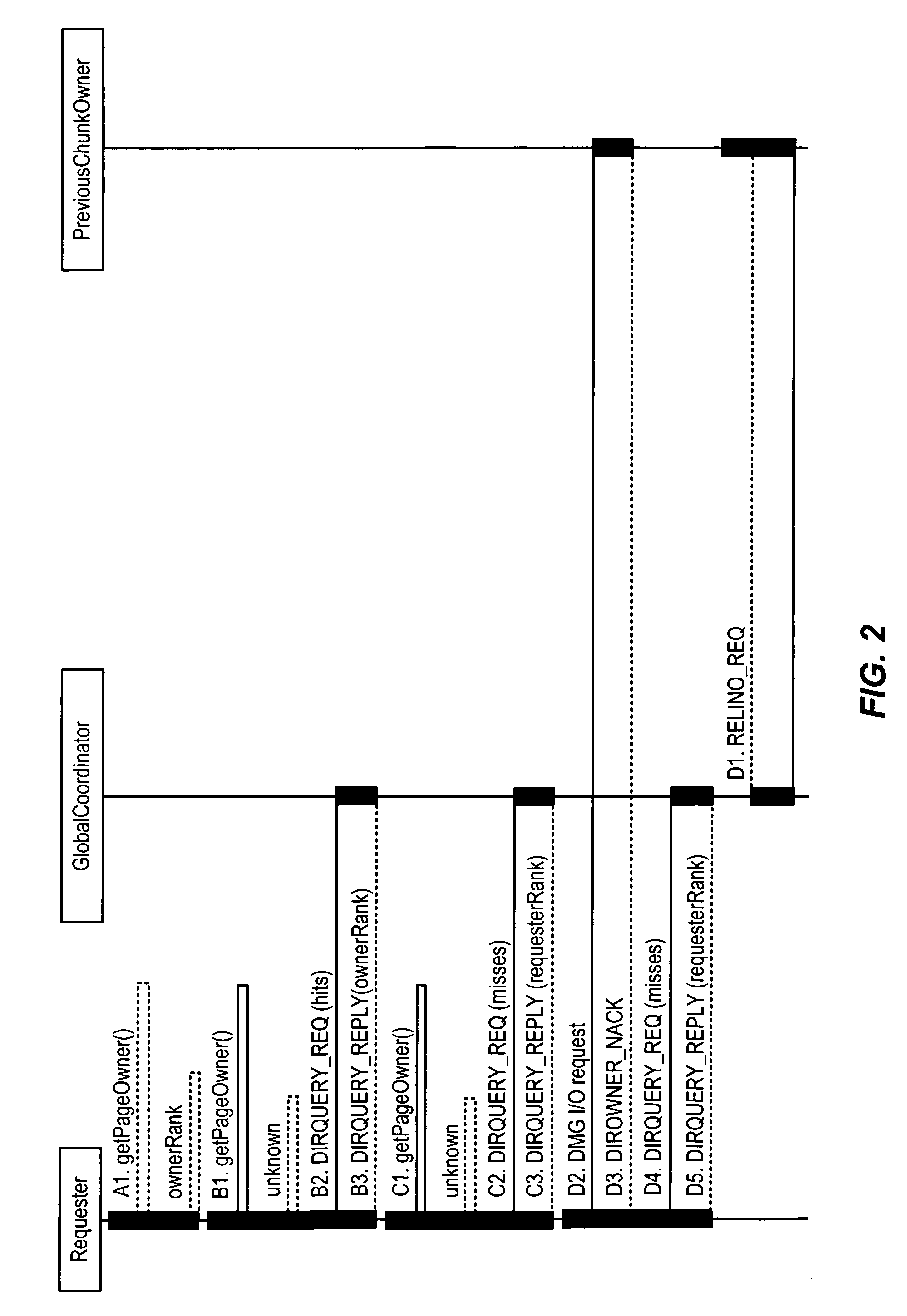[0006] According to the present invention, a plurality of access nodes sharing access to data on a storage network implement a directory based cache ownership scheme. One node, designated as a global coordinator, maintains a directory (e.g., table or other
data structure) storing information about I / O operations by the access nodes. The other nodes send requests to the global coordinator when an I / O operation is to be performed on identified data. Ownership of that data in the directory is given to the first requesting node. Ownership may transfer to another node if the
directory entry is unused or quiescent. According to the present invention, the distributed directory-based cache coherency allows for reducing bandwidth requirements between geographically separated access nodes by allowing localized (cached) access to remote data.
[0007] According to one aspect of the present invention, a method is provided for reducing the number messages sent between
data access nodes sharing access to a data storage network so as to maintain traffic
scalability. The method typically includes maintaining a directory of page ownership entries, wherein ownership of an entry is initially granted to the first access node requesting access to a page in the entry, and wherein ownership of an entry automatically transfers to the node that is accessing pages in the entry more often so as to reduce the number of synchronization messages sent between nodes.
[0008] According to another aspect of the present invention, a method is provided for reducing bandwidth between geographically separated access nodes sharing access to data in a data storage network. The method typically includes caching data locally to an access node to provide localized
cache access to that data for that node, and maintaining
data coherency for cached data between the access nodes using a directory based ownership scheme.
[0009] According to yet another aspect of the present invention, a method of providing
cache coherence between caches in a distributed set of
data access nodes in a data storage network typically includes maintaining a directory in at least one of a plurality of access nodes sharing access to the data storage network, the directory storing information about data accessed by the plurality of access nodes, and receiving, at a first data access node, a data access request from a host
system, the data access request identifying data to be processed. The method also typically includes determining whether the first access node has the identified data stored in cache, and if not, determining, using the directory, whether another node in the plurality of access nodes has a copy of the identified data stored in cache, and if a node has a copy of the identified data stored in cache, sending one of a share request to that node to share the identified data so that the requesting node does not have to access the identified data from storage or an invalidate request to invalidate the copy of the data stored in that node's cache.
[0010] According to a further aspect of the present invention, a method is provided for reducing the a number messages sent between data access nodes sharing access to a data storage network so as to maintain traffic
scalability. The method typically includes maintaining a directory for storing information about data accessed by a plurality of data access nodes, where the directory including entries representing one or more pages of data in the data storage network, and receiving, at a first data access node, a data access request from a host
system, where the data access request identifying data to be processed. The method also typically includes determining, using a global directory coordinator, whether a node has ownership of the
directory entry for the identified data, and if no node has ownership of the directory entry, granting to the first access node ownership of the directory entry for the identified data, and if a node has ownership of the entry, identifying that node to the first node. The first node can then communicate with the identified node to process an I / O request.
 Login to View More
Login to View More  Login to View More
Login to View More 


